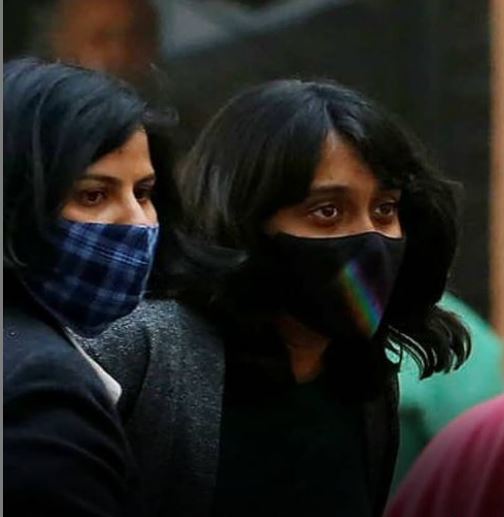The farmers’ agitation against the farm laws that put the government in a bad light both nationally and internationally is now pushed out of the main media headlines. Instead, a sideshow – the arrest of pro-farmer environment activist, Disha Ravi and proceedings in the court – is gaining front-page prominence. Whatever the outcome of the legal process, the government has succeeded, at least for the time being, in achieving what it has become quite adept in, namely managing headlines.
Be it demonetization, passing of GST, collapse of the economy pushing the unemployment rate to 45-year high or killing of 46 CRPF personnel in Pulwama by terrorists, the government has time and again deflected public scrutiny of its performance. More than governance, it seems to have developed expertise in burying burning issues of the day under media headlines of its own choosing.
It has happened once again in the case of the farmers’ agitation as well. The plight of the farmers camping at the borders of Delhi and their demand for repealing the three laws were getting traction throughout the country and abroad. Hardly any other news was getting greater media attention. The situation was going out of hand with international figures joining ranks with the agitating farmers and social media activists campaigning against government highhandedness in suppressing the farmers’ unrest. No amount of calumny against the farmers’ agitation and conspiracy theories spun by the government were of any help.
It was at this stage that the government realized that the social media tide was turning and so it wanted to create fear in the minds of its critics. The ‘toolkit’ edited and sent to Greta Thunberg by Disha and two others came handy for the government. The 22-year-old Disha was arrested to send the message across that campaign on social media platforms for the farmers could invite government crackdown. Reading the court proceedings would make it obvious to anyone that Disha’s actions in no way could amount to sedition or treason. Although, incarceration – with or without substance – of collusion with terrorists such as Khalistani operatives outside India is made out as a charge. Interestingly, the government could think only of Khalistani terrorists and no other outfit since the farmers’ agitation has drawn bulk of its supporters from Punjab.
Additional Sessions Judge Dharmender Rana of a Delhi court hearing the case was not convinced by the prosecution’s arguments that Disha was in league with Khalistanis hatching a plot against the government. After the police counsel could not come up with a satisfactory answer to the judge’s tough questioning on whether there is any direct link between Disha and the Khalistanis, the judge observed unless he could satisfy his conscience, he won’t move ahead.
The judge’s observation appears to be a welcome departure from some of the recent judicial pronouncements which look government-directed. Such a behavior of this judge could imply that chinks are showing in the armour.
In a queer development, several former judges and retired police officers, including CBI ex-chief Nageswara Rao, have written to President Ram Nath Kovind on Disha’s arrest saying it was surprising that her age was being highlighted to prove innocence. They argued that age is immaterial and what matters is a series of actions that are “naturally anti-national.” So much so that many are equating Disha with Ajmal Kasab and the Nirbhaya juvenile offender to prove that age is no criteria for judging a crime. The signatories include three former Chief Justices of High Courts, 17 former judges, 18 former Directors General of Police, a former Delhi Police Commissioner, a former member of the Central Vigilance Commission and a former special Director General of Central Reserve Police Force. What a galaxy indeed rallying behind the government.
Admittedly, while law should be equal for all those citizens who have reached the age of being a major, yet, comparing Disha with murderers is stupidity. By labeling farmers from Punjab as Khalistanis, the country is being subdivided once more. Earlier, we were told Moslems are traitors, Kashmiris are terrorists, JNU is ‘Tuke Tukde’ gang, Liberals or ‘Libtards’ are communists, communists are anti-national, dissent is sedition, ‘thinking’ people are urban naxals and mediapersons were labeled ‘Prestitutes’.
Such sub dividing of society can grievously hurt the fundamental idea of India. If religion could be the sole binder to create a nation, then Europe, as a catholic continent, would have been one country. While Hindooism may be the single big religion of this country, still, it does not contain a unified central theme. The Hindoo God Ayyappa could be completely unknown in Bihar. Similarly, the Bihari Hindoos’ Bol Bom religious practice may be completely unknown in Maharashtra. If Rajasthan and Bengali Hindoos practiced Sati in the old days, that practice did not exist in Orissa. There are millions of differences within the framework called Hindooism. Those differences are the beauty and strength of this thought process. To label Hindooism as a religion is to demean its essence.
One is tempted to conjecture whether the siding with farmers can be labeled as an act against the nation. India of today could probably be the only country in the world which considers its farmers, whatever be their numbers, as enemies.
